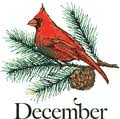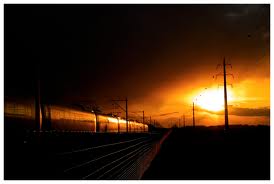A yuletide song would say that Christmas is the most wonderful time of the year. It is a rare opportunity where families and friends gather to celebrate the birth of Jesus Christ. Celebrating Christmas may vary depending on the country’s tradition. The tropical Christmas that we have in the Philippines may be different from those of the Western Hemisphere. This variation of Christmas traditions sparks curiosity especially to Filipinos who are longing of a White Christmas. A fellow Filipino will show us how they celebrate White Christmas in one of Europe’s most innovative country by far and the home of Swiss Alps – Switzerland.
The Swiss Flag is the federal symbol of Switzerland or the Swiss Confederation.
 Before we get to know how Switzerland celebrates Christmas, a quick rundown about the country would be a great appetizer. Switzerland, according to the World Economic Forum, is one of the richest countries in the world. It is also the birthplace of Red Cross. Switzerland or the Swiss Confederation has not been in a state of war internationally since 1815. As a result, it is considered as a neutral country. Switzerland is comprised of three main linguistic and cultural regions like German, Italian, and French.
Before we get to know how Switzerland celebrates Christmas, a quick rundown about the country would be a great appetizer. Switzerland, according to the World Economic Forum, is one of the richest countries in the world. It is also the birthplace of Red Cross. Switzerland or the Swiss Confederation has not been in a state of war internationally since 1815. As a result, it is considered as a neutral country. Switzerland is comprised of three main linguistic and cultural regions like German, Italian, and French.
Nenita Orenday – Bur during her March 2011 Philippine vacation.
Nenita Orenday – Bur is a dual citizen of both Philippines and Switzerland. In her 50 years of existence, half of it had experienced a tropical Filipino Christmas. The other half was spent in Lucerne, North-Central Switzerland where she became an Overseas Filipino Worker for Rado and Bulova Watches. Later on, she married a Swiss watchmaker named Marcel Bur. She eventually got her Swiss citizenship.
Nenita was amazed the first time she celebrated Christmas in Switzerland. The freezing weather and snow made a big difference from that of a windy Christmas weather in the Philippines. The sceneries in Switzerland during Christmas season are like beautiful pictures in calendars that they have in the Philippines. It was truly a dream come true, a White Christmas in the flesh. “Christmas in Switzerland is not as loud as in the Philippines. The views are beautiful but people choose to stay indoors because of the snow coming from the Swiss Alps.” she explained.
Ringli – Swiss homemade doughnuts.
Another difference that she noticed was the absence of 9 mornings of “Simbang Gabi” or the Filipino Midnight Mass which she had celebrated as a child. Many Swiss families go to churches to attend Midnight Mass only during Christmas Eve. Puto Bumbong, Bibingka, Suman, Chestnuts and Tablea Hot Chocolates of Batangas are mostly seen outside of Filipino churches during Simbang Gabi. On the other hand, huge homemade doughnuts called ringli and Swiss Hot Chocolate is shared by Swiss families. Aside from watches, Switzerland is also known for different kinds of chocolates from white to dark flavors.
 The Advent calendar is a significant part of the Swiss Christmas tradition. Many Swiss children take it on little flaps with windows and each had images that symbolize a Christmas scene. Both Philippines and Switzerland practice Christmas Carols. For Nenita, she really misses the little voice of Filipino children with their improvised tambourine and drums made out of softdrink taps and empty milk cans. Swiss children are cute while singing but behave a bit formal. Filipino children are more jolly and enthusiastic while singing Christmas Carols which made it more entertaining.
The Advent calendar is a significant part of the Swiss Christmas tradition. Many Swiss children take it on little flaps with windows and each had images that symbolize a Christmas scene. Both Philippines and Switzerland practice Christmas Carols. For Nenita, she really misses the little voice of Filipino children with their improvised tambourine and drums made out of softdrink taps and empty milk cans. Swiss children are cute while singing but behave a bit formal. Filipino children are more jolly and enthusiastic while singing Christmas Carols which made it more entertaining.
For Nenita, Filipino Carollers are more jolly and enthusiast than Swiss Children.
Jesus Christ as a celebrant of Christmas is represented by an angelic figure in Switzerland. It is also believed to be the symbol of the guiding star of Bethlehem. Meanwhile, Filipinos would represent Jesus as a child in the manger during Christmas. Santa Claus has been adapted to Filipino Christmas traditions but in Switzerland, he plays a much smaller role. Swiss believes that Santa Claus or for them “Samichlaus” was not accompanied by reindeer rather by a donkey and a dark-clad assistant.
Nenita recalls how exciting and fun it is to shop in Divisoria for Christmas gifts.
Nenita remembers how Filipinos diligently shop and go to malls just to add to the Christmas rush. She also misses midnight sale and challenge to lower the price of the item. In Switzerland, malls are closed as early as six in the evening. Because of this, she did not fully enjoy the shopping experience. She was still happy at the end of the day because chocolates in Switzerland are of bargain prices, they are abundant. She always sends chocolates to relatives in big boxes.
 With regards to exchange gifts, Christmas dinner, and Christmas decorations, Nenita said that there is no difference between the Philippines and Switzerland. “We also practice exchange gifts and even have our own Swiss family dinner. Swiss people are also family oriented. They sing songs of praise while decorating the Christmas tree during Christmas Eve.” she said. Unlike in Switzerland, Filipinos decorate their Christmas tree at the start of the “Ber” months. The Philippines has the longest celebration of Christmas in the world starting from September until the feast of the Epiphany in January.
With regards to exchange gifts, Christmas dinner, and Christmas decorations, Nenita said that there is no difference between the Philippines and Switzerland. “We also practice exchange gifts and even have our own Swiss family dinner. Swiss people are also family oriented. They sing songs of praise while decorating the Christmas tree during Christmas Eve.” she said. Unlike in Switzerland, Filipinos decorate their Christmas tree at the start of the “Ber” months. The Philippines has the longest celebration of Christmas in the world starting from September until the feast of the Epiphany in January.
It has been 25 years since Nenita have celebrated Christmas in the Philippines. She returns every two to five years but her work schedule would not allow her to travel during holidays. “Swiss Christmas tradition is always a joyful and solemn celebration but in my heart, I would always long for a Filipino Christmas. It is a different feeling when you celebrate Christmas in the Philippines. “ she revealed on the interview.
 Through Nenita’s story of Swiss White Christmas, similarities and differences from Philippine tropical Christmas was presented. From there, a discovery of the true meaning of Christmas was shown. It is always amazing to see how other parts of the world, like Switzerland, celebrate the birth of Jesus. We get thrilled of their White Christmas complete with falling snowflakes. But as Filipinos, we should also be proud of our own Christmas because it is the happiest Christmas in the world. We may not be as rich as Switzerland in terms of money but we are rich in values, unique traditions, and unending smiles for everyone. It is always nice to taste a White Christmas for it is mostly every Filipinos dream. But we can all agree that Filipino Christmas, even without our dream snow, is the best because it does not end only in the Epiphany. It stays forever through the love of our savior in the manger.
Through Nenita’s story of Swiss White Christmas, similarities and differences from Philippine tropical Christmas was presented. From there, a discovery of the true meaning of Christmas was shown. It is always amazing to see how other parts of the world, like Switzerland, celebrate the birth of Jesus. We get thrilled of their White Christmas complete with falling snowflakes. But as Filipinos, we should also be proud of our own Christmas because it is the happiest Christmas in the world. We may not be as rich as Switzerland in terms of money but we are rich in values, unique traditions, and unending smiles for everyone. It is always nice to taste a White Christmas for it is mostly every Filipinos dream. But we can all agree that Filipino Christmas, even without our dream snow, is the best because it does not end only in the Epiphany. It stays forever through the love of our savior in the manger.
Merry Christmas every one. One Love.
Images Source:
http://bankingfrancs.livejournal.com/
http://www.flickr.com/photos/interchangeableparts/3135839947/
http://www.flickr.com/photos/kochtopf/67082057/
http://skiswissvalley.com/stuff-to-know/valley-kids/
http://www.flickr.com/photos/daniel_walker/6346314345/
http://www.flickr.com/photos/switzerland_county_in_tourism/3110991074/
http://scrapbookdimensions.com/online/25-days-of-christmas-advent-calendar/
















 Have you ever tried standing at the top of a terra alta and looking below the city of Manila at night during the Christmas season? Let’s just say you will feel like a divine entity looking below a vast land filled with stars that consistently poke your eyes to glance at them and never take a blink.
Have you ever tried standing at the top of a terra alta and looking below the city of Manila at night during the Christmas season? Let’s just say you will feel like a divine entity looking below a vast land filled with stars that consistently poke your eyes to glance at them and never take a blink.

 Carollers are popular among Filipinos and Americans because both love music.
Carollers are popular among Filipinos and Americans because both love music.
 In an American table, the star of all delicacies is the roasted turkey. For Filipinos, since turkey is not a common delicacy, the ham, or the roasted or fried chicken is commonly the centrepiece. But for those who could afford, it would be the lechon that would be the star of all foods.
In an American table, the star of all delicacies is the roasted turkey. For Filipinos, since turkey is not a common delicacy, the ham, or the roasted or fried chicken is commonly the centrepiece. But for those who could afford, it would be the lechon that would be the star of all foods.
































 INDIA – “Bade Din Ki Mubarak” (Merry Christmas)
INDIA – “Bade Din Ki Mubarak” (Merry Christmas)




















You must be logged in to post a comment.